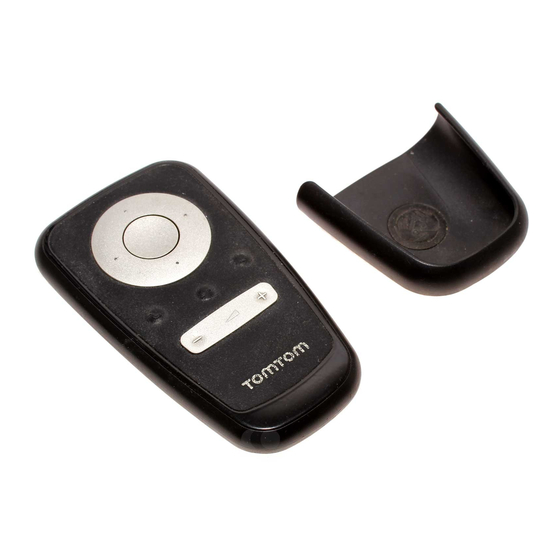TomTom Go 730 User Manual - Page 7
Browse online or download pdf User Manual for Car Navigation system TomTom Go 730. TomTom Go 730 19 pages. Tomtom go 730: supplementary guide
Also for TomTom Go 730: Manual (2 pages), Install Manual (1 pages), User Manual (38 pages), Supplementary Manual (1 pages), Installation Poster (2 pages)

Note that the title and layout of the third and final
grid will vary according to the type of street you
selected. For some roads (such as those that don't
have house numbers), you'll be asked to select a
particular 'Crossing:' (i.e. an intersection). If you'd
rather pick a crossing than a house number for a
particular road, just tap on the 'Crossing' button.
TomTom GO then calculates the fastest route from
your current position (according to the built-in
GPS receiver) to your destination. This calculation
should only take a few seconds and its progress is
shown on the screen.
When TomTom GO has finished calculating the
fastest route, a summary is shown, on a suitably
scaled map.
Tap on 'Done' and you'll find yourself back at the
main 3D view, but with the route now clearly
coloured in for you. White arrow heads show the
direction you need to move along the current road
and a specially-shaped green arrow shows what
to do at the next turn or intersection.
That's the planning all done, so simply buckle your
seat belt and drive. As you approach a specific
turn in TomTom GO's calculated route, your chosen
voice will tell you what to do (e.g. "In 100 metres,
turn left", followed by "Turn left"), without you
having to take your eyes off the road. Try it now.
Don't worry if you miss a turn or drive down the
wrong road. TomTom GO will automatically (and
virtually instantaneously) recalculate a new
fastest route, based on your new position and
direction of travel. Wherever you go, it will always
give you instructions that will take you to your
chosen destination.
As you drive, following the voice instructions, you'll
notice that the 3D display is updated constantly,
always showing upcoming roads and junctions and
presenting the best route to you. Beneath this
view is a blue panel, presenting other relevant
information, as shown below:
6
'Sound off' warning indicator.
Your next turn instruction.
The name of the next street to turn onto.
Journey information: current time and estimated
time of arrival.
Distance and journey time remaining.
Your current GPS position.
'Zoom out' and 'Zoom in' buttons.
'Next highway' indicator, if applicable.
See section 5.24 if you want to turn this off.
A 'phone-style' signal indicator to give an idea
of how good or bad the GPS signal is in your
current location.
no signal
weak - less than 3 satellites locked
minimal - 3 satellites
healthy - 4 satellites
good - 5 or 6 satellites
very good - at least 7 satellites
If you miss a voice instruction, just tap again on
the turn instruction in the bottom left hand corner
(
) to generate a new one. And if you'd like to
view the route summary again, tap anywhere in
the journey information panel in the bottom right
hand corner ( ,
,
or
).
Most of the time, the voice and turn instructions
are all you need to navigate successfully with
TomTom GO, which means never having to take
your eyes off the road. At complicated junctions,
where simple instructions aren't adequate to
describe the path to take, the 3D map view comes
into its own. A quick comparison between the map
and the world outside your windscreen should be
all you need.
Note that no instruction is shown or spoken at
junctions which require no action. In towns and
cities especially, don't be concerned that you are
passing side-roads and driving over crossroads
without any comment by TomTom GO.
